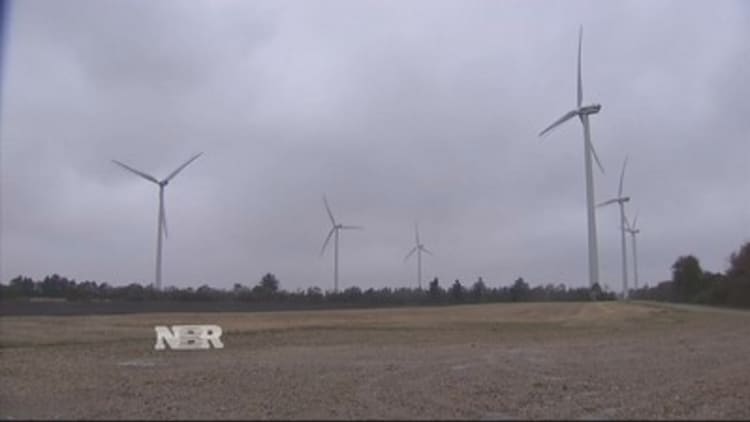Ozone-forming chemicals produced in eastern China have been drifting across the Pacific to the western United States, according to a new study. The pollution has combined with ozone released by natural processes to cancel out many of the gains from stricter pollution controls recently enacted in the United States, according to a new study.
Researchers from the NASA Jet Propulsion Laboratory in California and Wageningen University in the Netherlands used satellites to measure levels of ozone in a layer of atmosphere called the mid-tropospheric region, which is between 10,000 and 30,000 feet above the Earth's surface. They then used the measurements in computer models that traced the origin of ozone seen in the troposphere above the western United States.
The authors found that overall, ozone levels in the western United States not drop in some areas over that time period, contrary to expectations. Some of areas where nitrogen oxide levels dropped the most did see slight decreases in ozone, but the region as a whole saw no change.
Read MoreScenes from the devastating Tianjin explosion
"We tend to think of pollution as a local issue that can be addressed at the local, state or national level," said Jessica Neu, a researcher at the jet propulsion laboratory and one of the paper's co-authors. "This paper is really showing that long-range transport of pollution is an international issue, in the same way that climate change has become an international issue."
Natural processes were responsible for a little more than half of the ozone increase. A particularly strong El Niño in 2009 and 2010 drew a large amount of ozone out of the stratosphere—the one of the outermost layers of the atmosphere. Ozone naturally occurs there—it's produced by solar energy reacting with oxygen molecules and forms the "ozone layer" which protects the Earth from solar radiation.

But pollution also contributes ozone to the atmosphere, especially in the layers closer to the Earth's surface. Chemicals released into the air from factories, car exhaust and other sources create ozone when they come into contact with ultraviolet light from the sun.
The United States has successfully limited the use of the chemicals that act as precursors to ozone. Levels of one of those chemicals—nitrogen oxide—declined about 21 percent in the United States between 2005 and 2010, the study said.
Read More
However, nitrogen oxide levels in China increased by 21 percent over the same time period, and that contributed to a 7 percent increase in ozone in the troposphere above China. And some of that wafted across the ocean toward American shores.
The team published its findings this week in the journal Nature Geoscience.
Further, future contributions could be higher as China's economy grows and as other countries in Asia (and beyond) begin developing their own industrial economies, or putting more cars on their roads.
"The impact of Chinese pollution on the West Coast over the six years we looked at was relatively small, but the future impact of Chinese emissions is highly uncertain," Neu told CNBC. "We don't know if they are going to reduce emissions, or continue along the same path, and there is the potential down the road for larger impacts. There could be health impacts, ecological impacts and implications for climate change."


